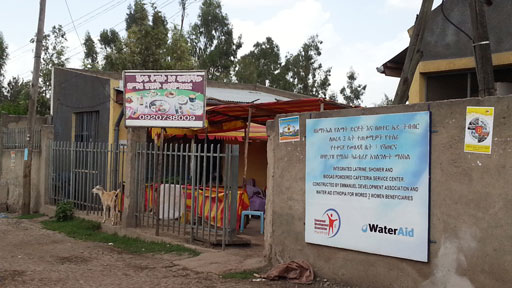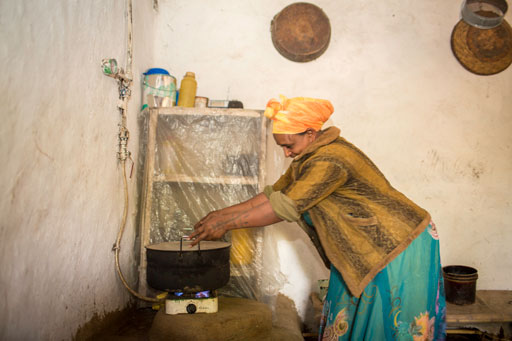13.4 Financial sustainability of WASH services
As you can see in Table 13.1, finance is a key determinant in the sustainable operation and utilisation of WASH facilities. All WASH facilities, once in operation, require proper care and management. If they are to provide long-term service and hence be sustainable, adequate finance is required.
Financial sustainability refers to the ability to generate adequate revenue from provision of services, in order to cover expenses and generate additional money for future needs. In simple terms, there must be more money coming in than there is going out.
The managing body of a facility should ensure people are nominated to looking after it over its service life. Some should look after the day-to-day operation and others provide maintenance when the need arises. These people need to be paid. Some maintenance activities require money for the purchase of spare parts. Some facilities require electricity and water, which need to be paid for each month. For some facilities it may also be necessary to recover all or part of the initial cost of construction. For example, urban water utilities are expected, by law, to fully recover their initial investment cost over the service life of the facility.
All these expenses must be covered if a facility is to provide continuous service to users. If maintenance technicians are not paid for their work, the facility will be poorly maintained. As a result the facility will provide only a reduced service or may fall into disrepair. If electricity and water bills are not paid, a public latrine will soon be without light and flushing water. In short, without the ability to cover costs and expenses WASH facilities cannot be sustained. Conversely, if adequate money is generated to cover expenses, the facility will be able to provide long-term and full capacity service because an appropriate level of care and maintenance can be provided.
WASH facilities are usually designed and operated in such a way that that they can generate income (revenue). The income is collected from users, who may be individuals in the community, companies and organisations. These users may pay for the services they get on a regular basis or per use. A group or company is established to manage the facility, its revenues and expenses. For example, a private company may take on a contractual agreement with a municipality to manage a public latrine. Urban water utilities oversee the management and operation of water supply and liquid waste disposal in towns and they have the right to collect money from users for the services their facilities provide.
What do you think happens if financial sustainability is not achieved and maintained?
Where revenues collected are not adequate to cover the running costs including salaries of employees and other miscellaneous expenses, the facility will reduce its service level and eventually stop functioning.
Financial sustainability should be considered at the planning stage and carefully implemented throughout the rest of the project cycle. An important part of financial sustainability is setting an appropriate tariff. The tariff is an amount of money that a user pays for a single unit of service. For instance, a utility may set a tariff of Birr 2.50 per cubic metre of water provided. A public shower operator may set a tariff of Birr 5.00 for a single use. Similarly, organised youth groups may set their own tariff to households that use waste collection and disposal services they have set up.
During the planning stage, different tariff rates for services should be compared with the estimated expenses to decide if the facility can be financially sustained. Tariffs should also be set to ensure than the poorest users will be able to afford the cost. Regrettably, the poorest people have not always benefitted to the same extent as the better off from WASH developments in either urban or rural settings in many countries.
During the construction and post-construction stages, costs should be kept to a minimum. If expenses rise, the tariff will have to be increased so that financial sustainability is maintained.
Urban communities, as users of these facilities, should be aware of this concept and willing to pay for services they are getting. Paying is the only way to guarantee that services will continue to be available. As you learned in Study Session 6 and in Study Session 11, community engagement and community mobilisation are used to ensure urban communities understand their role and contribution in sustaining WASH services.
Now read Case Study 13.1 and answer the question that follows.
Case Study 13.1 Emanuel public facility
Emanuel public facility is located in Akaki, a sub-city of Addis Ababa (Figure 13.4). The facility provides services of latrine, shower and cafeteria to the surrounding community. The facility has a biogas digester which uses the excreta collected in the latrines and most of the organic waste from the kitchen to produce biogas. The gas is used in the kitchen for cooking food using a stove similar to the one shown in Figure 13.5. The facility also uses electricity to supplement its energy needs. The main users are visitors to the nearby market.


The facility is managed by a group of women who have received training and support on the sustainable use and management of the facility.
The chairwoman of the group reports that they have made an effort to ensure profitability by setting tariffs for users. They have ensured continuous investment in maintenance (e.g. timely desludging of slurry from the digester), reduced incidental costs by avoiding use of external labour and doing most of the work themselves, and minimised recurrent costs including their own salaries.
Today, two years after the start of their small business, the facility generates more revenue than expenses and has proved to be financially sustainable. As a result, the group has ventured further and have started up an additional small restaurant business in a different location.
What additional factors would need to be taken into consideration to ensure continuous functionality of this facility in the long term?
It would be sensible to set aside money to pay repair costs in the event of a major breakdown, for example if the digester develops a leak or other unforeseen problem.
13.3 Encouraging sustainable behaviour change
